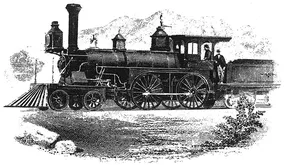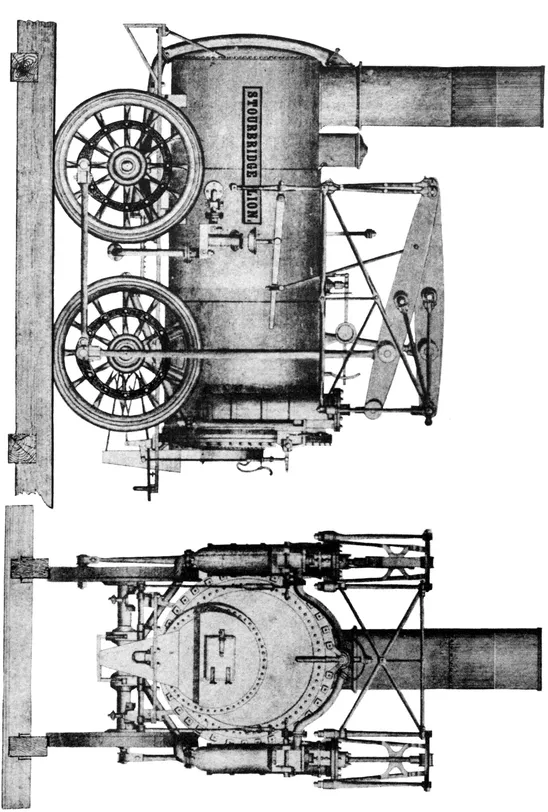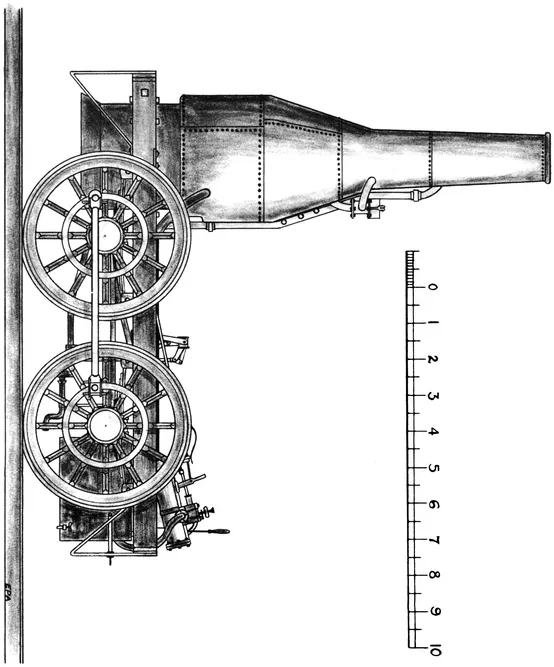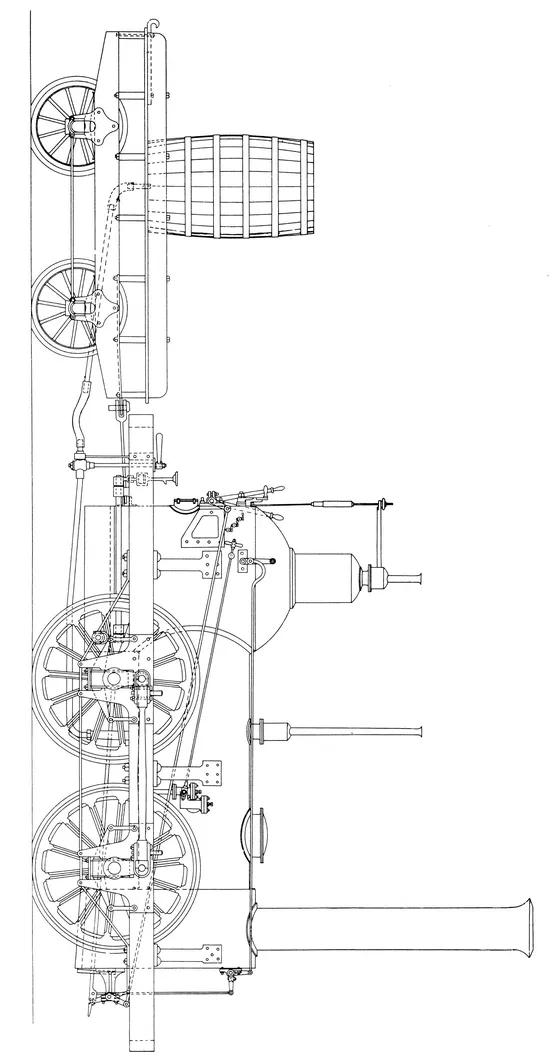
eBook - ePub
Iron Horses
American Locomotives 1829-1900
E. P. Alexander
This is a test
Condividi libro
- 240 pagine
- English
- ePUB (disponibile sull'app)
- Disponibile su iOS e Android
eBook - ePub
Iron Horses
American Locomotives 1829-1900
E. P. Alexander
Dettagli del libro
Anteprima del libro
Indice dei contenuti
Citazioni
Informazioni sul libro
Colorful stories of the old steam engines of yesteryear fill these pages — from the steam carriage operated on the streets of Paris in 1769 to the mighty locomotives that thundered across the American West in the latter half of the 19th century. 98 plates of fine, rare illustrations, many rendered by the author.
Domande frequenti
Come faccio ad annullare l'abbonamento?
È semplicissimo: basta accedere alla sezione Account nelle Impostazioni e cliccare su "Annulla abbonamento". Dopo la cancellazione, l'abbonamento rimarrà attivo per il periodo rimanente già pagato. Per maggiori informazioni, clicca qui
È possibile scaricare libri? Se sì, come?
Al momento è possibile scaricare tramite l'app tutti i nostri libri ePub mobile-friendly. Anche la maggior parte dei nostri PDF è scaricabile e stiamo lavorando per rendere disponibile quanto prima il download di tutti gli altri file. Per maggiori informazioni, clicca qui
Che differenza c'è tra i piani?
Entrambi i piani ti danno accesso illimitato alla libreria e a tutte le funzionalità di Perlego. Le uniche differenze sono il prezzo e il periodo di abbonamento: con il piano annuale risparmierai circa il 30% rispetto a 12 rate con quello mensile.
Cos'è Perlego?
Perlego è un servizio di abbonamento a testi accademici, che ti permette di accedere a un'intera libreria online a un prezzo inferiore rispetto a quello che pagheresti per acquistare un singolo libro al mese. Con oltre 1 milione di testi suddivisi in più di 1.000 categorie, troverai sicuramente ciò che fa per te! Per maggiori informazioni, clicca qui.
Perlego supporta la sintesi vocale?
Cerca l'icona Sintesi vocale nel prossimo libro che leggerai per verificare se è possibile riprodurre l'audio. Questo strumento permette di leggere il testo a voce alta, evidenziandolo man mano che la lettura procede. Puoi aumentare o diminuire la velocità della sintesi vocale, oppure sospendere la riproduzione. Per maggiori informazioni, clicca qui.
Iron Horses è disponibile online in formato PDF/ePub?
Sì, puoi accedere a Iron Horses di E. P. Alexander in formato PDF e/o ePub. Scopri oltre 1 milione di libri disponibili nel nostro catalogo.
Informazioni
Editore
Dover PublicationsAnno
2013ISBN
9780486142777

PLATES
1
1829. THE STOURBRIDGE LION
ORDERED by Horatio Allen for the Delaware & Hudson Canal Company from the firm of Foster, Rastrick & Company of Stourbridge, England, this was the first actual locomotive (as distinguished from experimental engines) to run in America. It was shipped from Liverpool on April 8 and arrived in New York on May 15, having actually been built before the famous Rocket of Stephenson. It was sent by river boat to Roundout and then by canal to Honesdale, arriving there on July 23. On August 8, 1829, it made its trial trip, being operated by Horatio Allen.
It was intended that this and the other locomotives which were never run (page 21) be used for hauling coal from Carbondale to Honesdale. The track crossed the Lackawaxen Creek on a trestle but it was considered unsafe for the engine, which was found to weigh more than twice as much as the 3 tons specified in the contract. But steam having been raised, despite the efforts of friends to dissuade him, Allen alone ran the Lion back and forth across the trestle, at about 10 miles an hour.
Though the Lion proved itself capable, it was not used again and was stored near by. Eventually it was broken up, but some parts were located and are now in the National Museum in Washington.
The Lion cost $3,000. It weighed 7 tons and had vertical cylinders, all wheels being coupled. The wheels were of oak with iron tires and “grasshopper” beams were used to transmit the power to them from the cylinders. Most accounts say a painting of a lion’s head appeared on its boiler front.

2
1830. THE BEST FRIEND OF CHARLESTON
THE first locomotive to draw a train in America was contracted for by the Charleston & Hamburg Railroad, later known as the South Carolina Railroad. It was designed by E. L. Miller of Charleston and ordered in March, 1830, from the West Point Foundry of New York. In October of that year it was sent by ocean packet to Charleston, where it was set up by Julius Petsch and Nicholas Darrell. It had its trial run on November 2 and on December 14 and 15 pulled four or five cars with some forty to fifty passengers at speeds up to 21 miles an hour. On January 15, 1831, it inaugurated regular service on this railroad with a brigade of three cars.
On the seventeenth of June of the same year this engine was the first on record to have a boiler explosion. The Negro fireman became annoyed with the sound of escaping steam from the safety valve and held down its lever. The explosion scalded the engineer, Nicholas Darrell, and injured the fireman so that he died a few days later. The engine was rebuilt under the direction of Julius Petsch, who was appointed master machinist of the road, and renamed Phoenix.
Cylinders 6 by 16 inches Weight 4½ tons Driving wheel 54 inches in diameter Steam pressure 50 pounds Tractive effort 400 pounds

3
1831. THE JOHN BULL
BUILT by the works of George and Robert Stephenson at Newcastle upon Tyne, though familiarly known by the above title, it is perhaps more accurately designated as Number 1 of the Camden & Amboy Railroad, being also occasionally called the Stevens. After its arrival in Philadelphia (page 25), Robert Stevens engaged Isaac Dripps, a young mechanic, to take charge and assemble the engine. Dripps had it put aboard a sloop and taken to Bordentown and then hauled by wagon to a ¾-mile length of track near the town. Here, in a shed adjoining the track, Dripps put the engine together. He had never before seen a locomotive and had no drawings or other dimensions to guide him, but he successfully completed its assembly. Since no tender had been supplied, Dripps made a four-wheeled car, to the platform of which he fastened a whisky cask obtained from a Bordentown grocery. A local shoemaker made him a leather pipe for the water-supply connection between engine and tender.
On November 12, 1831, the members of the New Jersey state legislature were the first passengers to be hauled by this engine on its trial trip over the short section of track then laid down. The engine did not go into regular service until late in 1833 when other engines had been built and there was sufficient motive power as well as trackage to commence operation.
The illustration shows the locomotive approximately as it originally appeared. When rebuilt, the connecting rods were removed and a pilot, designed by Dripps, added. This was found necessary both to push obstructions off the track and to help guide the engine on curves. It was the first ever applied to a locomotive (see Figure 8 page 27).
The John Bull is the oldest locomotive preserved in America today. It has made a number of trips, notably to the Columbian Exposition in 1893, under its own steam. It is now preserved in the National Museum. Cylinders 9 by 20 inches Weight 10 tons Drivers 54 inches in diameter Gauge 5 feet

4
1832. THE OLD IRONSIDES
AS A result of the success of his model locomotive at the Philadelphia Museum in 1831, Matthias Baldwin was given an order for a locomotive to be used on the Philadelphia, Germantown and Norristown Railroad, a short line 6 miles in length then operated with horses. In building this engine, which he named Old Ironsides, Baldwin had considerable difficulties to surmount as there were few competent mechanics and fewer suitable tools. Much of the work later done by machines was then necessarily entirely done by hand. Nevertheless, the engine was finally completed and, though some improvements were found necessary, was put into regular service three days after its trial on November 23, 1832. The Chronicle of November 24 of that year says:
It gives us pleasure to state that the locomotive engine built by our townsman, M. W. Baldwin, has proved highly successful. In the presence of several gentlemen of science and information on such subjects, the engine was yesterday placed upon the road for the first time. All her parts had been previously highly finished and fitted together in Mr. Baldwin’s factory.... The placing fire in the furnace and raising steam occupied 20 minutes. The engine (with her tender) moved from the depot in beautiful style, working with great ease and unifo...